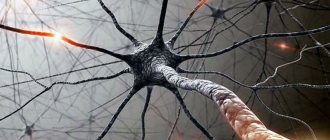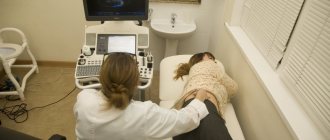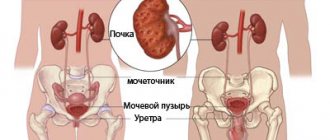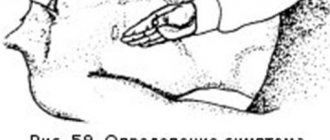Do you feel tingling and spasms in the solar plexus area? Consult a doctor quickly to avoid possible consequences. The celiac plexus is located above the diaphragm and is a node of nerve endings. Many people have pain in the solar plexus area, the reasons are different for everyone, because you need to figure them out based on the symptoms, the nature of the pain, because they can talk about different things, since there are many nerve endings there. The pain may not necessarily come from the solar plexus area, but it will be quite possible to feel it in this area.
Naturally, the best decision would be to go to a doctor or call him at home in case of severe pain. But in any case, you need to know what to do in order to more accurately determine the pain problem itself, what measures should be taken and what should not be done. It is worth understanding that in addition to a bunch of nerve endings, important organs are located in this place, such as the kidneys, aorta, esophagus, ureter and others. If any of the organs does not function properly, then pain symptoms can be felt in the solar plexus.
What can you do on your own for chest pain?
Solar plexus pain can be severe
If the pain can be called tolerable, then it is enough to take painkillers and antispasmodics, after which you should still seek help from a general practitioner. But there is a certain disadvantage here, since drugs can reduce symptoms and it will be much more difficult for the doctor to understand the cause of the pain.
If the pain is very strong, then it is better not to take any painkillers, but to call an ambulance, they will be able to adjust your further actions more accurately. The following factors to consider will help determine the cause:
- Time of day at which the pain worsens
- Actions that cause pain
- The nature of the sensations (cuts, stabs, aches, etc.)
- Were there any injuries the day before that could have caused pain?
If you do not know what to do correctly, do not take risks, so as not to aggravate the problem, contact a professional.
Types of pain, what it indicates
Discomfort in the solar plexus area can be of different types:
- Constant dull pain not associated with eating, which intensifies when lying down or standing, may indicate the development of solaritis. With neuritis, solar crises can also develop, when the pain becomes sharp, burning and boring and forces the patient to be in a forced position.
- A nagging soreness that occurs immediately after eating or on an empty stomach may indicate the appearance of gastritis. Also, similar manifestations are typical for duodenitis.
- A nagging and aching pain of unknown origin that bothers a person for a long time can be a symptom of tumors.
- A burning sensation in the solar plexus at night and during hunger may indicate the formation of an ulcer.
- Drawing, pressing pain, which is accompanied by nausea, periodic rashes on the skin and cough, may indicate helminthiasis.
- Diffuse acute pain, which is accompanied by nausea and vomiting, may indicate cholelithiasis, when a stone blocks the bile ducts.
- Acute, sharp pain in the solar plexus area, which interferes with movement, talking and even breathing, occurs if solar plexus neuralgia (intercostal neuralgia) has developed.
Possible diseases and symptoms of pain in the solar plexus
One of the reasons may be neuritis, which causes inflammation of the nerve endings of the solar plexus. Neuritis can be caused by quite a variety of factors. It can occur due to heavy physical exertion, a sedentary lifestyle, injury, or due to surgical intervention. Neuritis can occur and manifest itself at any time of the day, but those who are nervous a lot or find themselves in stressful situations are especially susceptible.
During a change of position, the pain may intensify and expand the radius of pain, after which painful sensations may occur in the spine and sides. In order to dull the pain a little, you can bend over and press your knees to your chest, this may help somewhat. To completely eliminate pain, you need to identify the cause of the pain and eliminate it, it could be a virus or pathogens.
The solar plexus is a plexus of nerve endings
Neuralgia is in many ways similar to neuritis, but the pain is much stronger. You may feel as if your solar plexus is being squeezed in a vice. This disease occurs due to irritation of the nerve ganglion. Sometimes the pain is so severe that it is difficult to breathe air and move. The causes may include pathologies and disorders of the nervous system, parasitic microorganisms, and viruses. Treatment involves pain relief.
Causes of pain caused by pathology of internal organs
Solar plexus pain often occurs during pregnancy
Pain in this area can even appear due to a reflex reaction to pressure that has become higher than normal. This is due to the fact that the nerve plexus is located near the aorta, and from there the baroreceptors can send a signal to all organs. This is how adaptation occurs during stress. The word stress refers not only to mental problems, but also to hemodynamic disorders in the body.
During pregnancy, pain in the solar plexus may also occur, which may be accompanied by nausea and temporary blurred vision. During epigastria, a disorder of the gastrointestinal system occurs, which may be followed by the following diseases:
- Gastritis
- Ulcer (stomach, duodenum)
- Pancreatitis
- Intestinal pathology
- Pathology in the abdominal cavity
If the mucous membrane becomes inflamed, then during a meal you may experience pain in the solar plexus or even in the duodenum. If a stomach or duodenal ulcer occurs, the pain becomes truly unbearable because fluid from the stomach cavity enters directly into the abdominal cavity. Hydrochloric acid hits the receptors, and they send a signal to the center of the nerve plexus. If you take medications, the acidity may decrease and the pain will be relieved.
When inflammation of the solar plexus nerves occurs, the small intestine may begin to ache regardless of the cause of the disease, since it is also close to the plexus. Symptoms of nausea may occur as the central nervous system is irritated. These sensations are similar to the symptoms of seasickness. Pathology of the abdominal cavity is fraught with the following symptoms:
- Peritonitis
- Adhesive disease
- Worm infestation
- Prolapse of internal organs (kidneys and stomach)
In this case, pain in the plexus becomes clearly noticeable during pressing; if the pathology worsens, the pain becomes very strong.
Timely treatment of problems associated with pain in the solar plexus can protect you from such a result.
The solar plexus can also hurt due to injuries. Indeed, pain in the solar plexus area can occur even if there are no inflammatory processes or the presence of pathogens. This can happen due to previous injuries. They usually happen when playing sports, but not only, even wearing a tightly tightened belt can cause painful sensations in the solar plexus. How to determine pain in case of injury:
- Burning sensation in the abdominal cavity
- Severe shortness of breath and difficulty breathing
- Gagging
- Darkening in the eyes
If the problem is not serious, you may be able to get away with a slight clouding of consciousness. If the injury is serious, there is a possibility of losing consciousness. There must be a medical unit on the territory of the sports complex to provide first aid.
Diagnostics
Laparoscopy procedure
Aching pain in the solar plexus area is a reason to contact specialized specialists who will help eliminate danger to life and begin treatment faster. First, the patient contacts a therapist who will conduct an examination. If treatment of the disease is not within his competence, the patient is referred to a specialist: a neurologist, an infectious disease specialist, a gastroenterologist.
The process of identifying the correct diagnosis for pain in the solar plexus area takes several days. A general anamnesis is collected, which clarifies the psycho-emotional background, determines the nature of the pain, and the presence of chronic pathologies. Next, examinations are prescribed.
- A general analysis of urine and blood to determine the presence of an inflammatory process in the body.
- Ultrasound of the abdominal cavity (only after taking Espumisan, if there is bloating) and chest.
- MRI or computed tomography.
- X-ray with contrast enhancement (a special harmless substance for the body that the patient must drink before the procedure).
- If an infection is suspected, a bacteriological examination is prescribed.
- Laparoscopy is a surgical procedure that is performed using a puncture and insertion of instruments with a microcamera into the abdominal cavity.
After receiving the results of all the studies, the doctor decides what the treatment method will be and may prescribe a referral to a hospital.
Prevention and treatment of such symptoms
Often pain in the solar plexus occurs as a result of an injury.
Pain in the solar plexus can be felt in connection with diseases of other organs. Some of these diseases may not pose any threat, but others can lead to severe consequences and poor overall health. For diagnosis, the following methods are used:
- Ultrasound therapy of the abdominal cavity
- CT scan
- Taking an x-ray using a contrast agent (allows you to ultimately identify the cause of the disease on an x-ray)
- Laparoscopy (for this purpose, a miniature video camera is introduced into the abdominal cavity; it is done if other methods do not give an effective result)
- Tests (feces, urine)
- Bacteriological studies
- Endoscopic examination of the duodenum and esophagus
Despite a fairly wide range of methods for identifying the cause of the disease, none of them may reveal the underlying cause. Therefore, it is necessary to resort to treatment of the underlying disease. Treatment is prescribed by a doctor.
So now you know the consequences of minor pain in the solar plexus. If you experience any of the above symptoms, you need to see a professional as soon as possible. Neglecting and delaying treatment can result in real suffering and serious health problems. The sooner you contact the clinic, the sooner it will be clear how to prevent the problem.
Summary of information
Let us list the main nature of the causes that influence the occurrence of pain in the solar plexus.
Table 1. Causes of pain in the solar plexus radiating to the back
| External influence on the solar plexus area | The causes of pain lie in internal pathologies of the body. |
| •overexertion due to the use of excessively heavy sports equipment; •long run at a fast pace; •incorrect technique for performing sports exercises; •sedentary lifestyle, lack of physical activity; •a blow to the solar plexus; •pressure of a belt or other item of clothing on the desired area; •fall on a foreign object; •sleeping on a hard object in the solar plexus area. | • solarite; •neuralgia; •diseases of any organ of the gastrointestinal tract (for example, intestines, stomach, pancreas); • diseases of the lungs and respiratory tract; •pathologies of segments of the cardiovascular system. |
The diseases listed in the article are not all pathological processes that can cause discomfort and pain in the solar plexus. Unfortunately, a person cannot determine the origin of this discomfort at home, and therefore cannot eliminate it. In any case, you will need to see a doctor.









